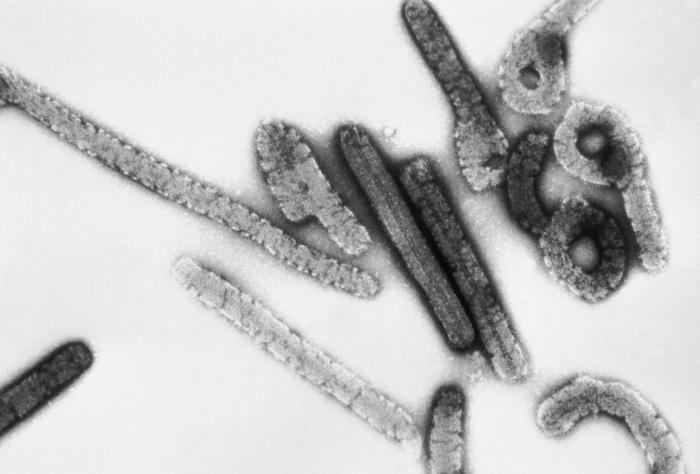Marburg Hemorrhagic Fever

Marburg hemorrhagic fever (MHF), caused by Marburg virus, is a severe viral hemorrhagic disease characterized by initial fever and malaise followed by gastrointestinal symptoms, bleeding, shock, and multi-organ system failure.
Epidemiology
MHF is endemic to Central Africa and is generally recognized in sporadic small outbreaks (<50 cases), although one large (>250 cases) nosocomial outbreak occurred in Angola in 2004-2005. Less than 500 cases have been reported to date.
Clinical description
After an incubation period of about 8 days (range 3-21 days), patients typically present with the abrupt onset of non-specific signs and symptoms including fever, malaise, headache, chest pain and myalgia/arthralgia, followed rapidly by gastrointestinal manifestations (vomiting, diarrhea, abdominal pain) and, in some cases, a maculopapular skin rash. Severe cases develop bleeding (sub-conjunctival hemorrhage, epistaxis, bleeding from the mouth and rectum, oozing from venipuncture sites), neurologic involvement (disorientation, convulsions, coma), shock and multi-organ system failure. Mild-to-moderate leukopenia and thrombocytopenia are often present and disseminated intravascular coagulation (DIC) commonly develops, best indicated by the presence of D-dimers.
Etiology
Over 25 different viruses cause viral hemorrhagic fever. Marburg virus is a member of the virus family Filoviridae, along with Ebola virus. Numerous strains have been identified, putatively with different degrees of lethality. Accumulating evidence implicates fruit bats as the Marburg virus reservoir, with primary human infection presumably from unwitting contact with bat excreta or saliva. Entry into caves and mines where fruit bats roost is a risk factor. Infection has also rarely occurred through contact with tissues of wild monkeys, presumably also infected through bat exposure. Human-to-human transmission occurs through direct contact with blood or bodily fluids of infected persons.
Diagnostic methods
Common diagnostic modalities include cell culture (restricted to biosafety level-4 laboratories), serologic testing by enzyme linked immunosorbent assay (ELISA) or indirect fluorescent antibody (IFA), and reverse transcription polymerase chain reaction (RT-PCR). Because no commercial assays are presently available, these tests are typically performed only in a few specialized laboratories.
Differential diagnosis
MHF is difficult to distinguish from a host of other febrile illnesses, at least early in the course of disease. Other viral hemorrhagic fevers need to be excluded, especially Ebola hemorrhagic fever, as well as malaria, typhoid fever, leptospirosis, rickettsial infection, plague (see these terms), bacterial dysenteryand meningococcemia.
Management and treatment
Patients should be isolated and viral hemorrhagic fever precautions (face shields, surgical masks, double gloves, surgical gowns and aprons) should be used to prevent nosocomial transmission. As there is presently no antiviral drug available for MHF, treatment is supportive, following the guidelines for treatment of severe septicemia. Persons who have unprotected contact with someone with MHF should be monitored.
Prognosis
Case-fatality rates are typically over 80%, although it was only 22% in one outbreak in Europe stemming from imported monkeys. Shock, bleeding, neurological manifestations, high viremia, aspartate aminotransferase (AST) > 150 IU/L, and pregnancy confer a poor prognosis. Convalescence may last up to a year but survivors usually have no lasting sequelae.